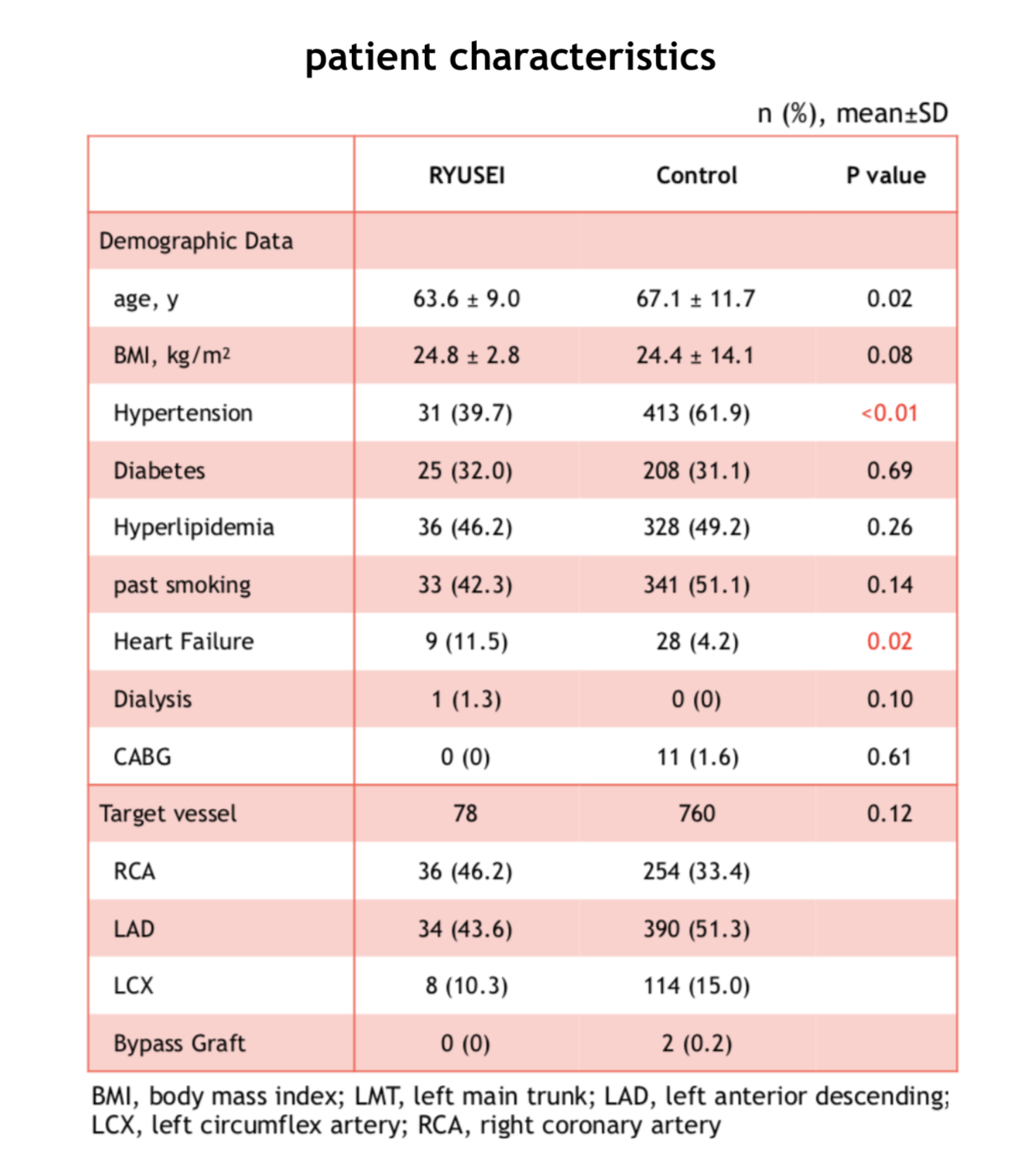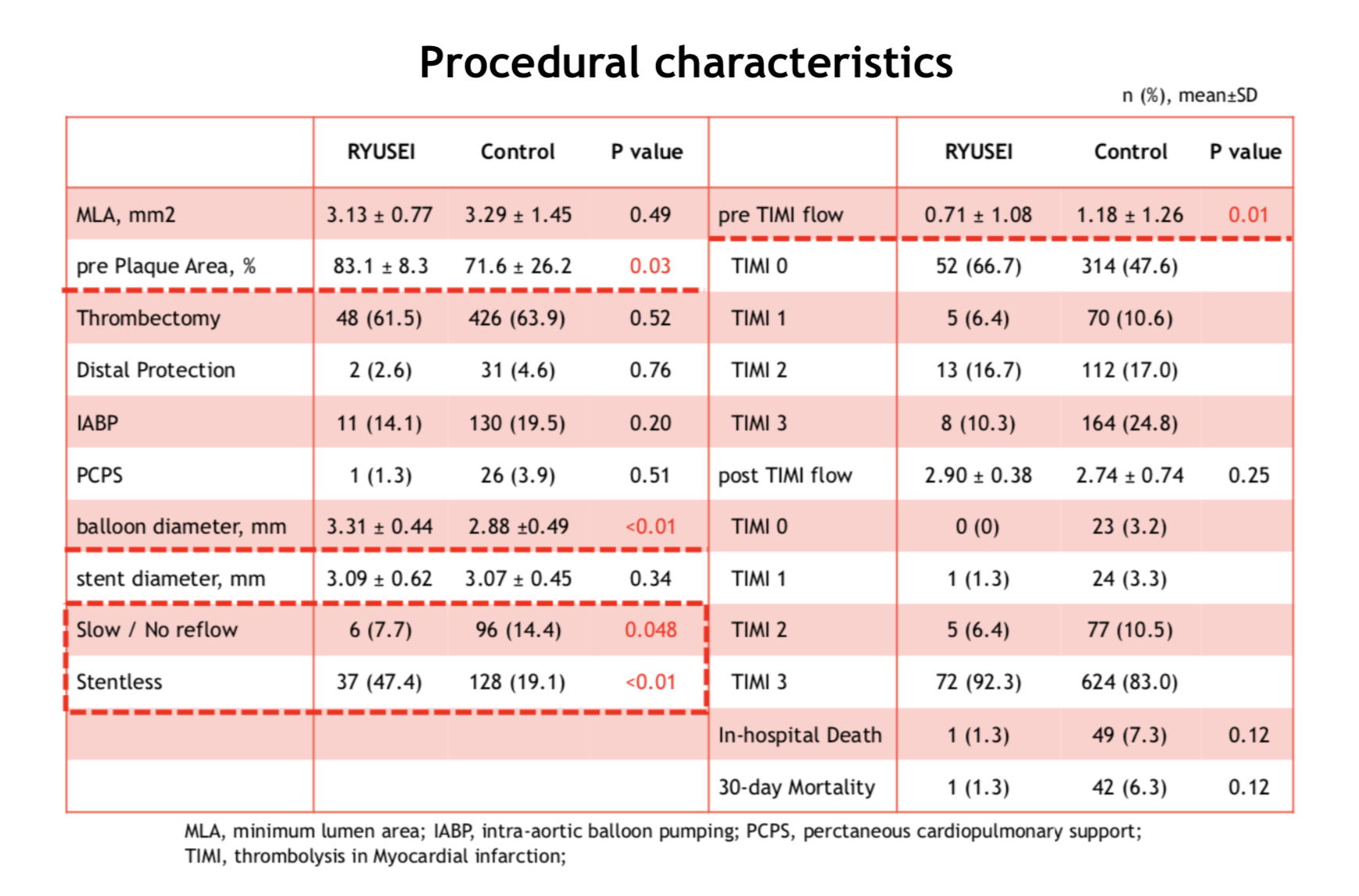Lots of interesting abstracts and cases were submitted for TCTAP & AP VALVES 2020 Virtual. Below are accepted ones after thoroughly reviewed by our official reviewers. Don¡¯t miss the opportunity to explore your knowledge and interact with authors as well as virtual participants by sharing your opinion!
* The E-Science Station is well-optimized for PC.
We highly recommend you use a desktop computer or laptop to browse E-posters.
ABS20191028_0006
| Acute Coronary Syndromes (STEMI, NSTE-ACS) | |
| The Utility of Perfusion Balloon for ACS | |
| Takuma Tsuda1, Nao Yasuda1 | |
| Nagoya Ekisaikai Hospital, Japan1 | |
|
Background:
Acute coronary syndrome has remained high mortality even though procedure and device of PCI had dramatically improved over decades. One of the reasons is considered as slow flow or no reflow phenomenon during PCI. Moreover, there also remained the risk of stent thrombosis even in new generation DESs in long term periods. Our purpose of this study was to assess the utility of long inflation with perfusion balloon for ACS concerning about slow flow phenomenon and the rate of stentless procedure.
|
|
|
Methods:
This study was multicenter and retrospective with a total of consecutive 745 patients, who underwent primary PCI for ACS due to clinical indication during January 2014 to Aug 2018. We classified as two group (Perfusion group (P group) 72 patients, Control group (C group) 667 patients), and assessed lesion severity, devices, the rate of slow flow/ no reflow phenomenon and post TIMI flow during PCI, respectively.
 |
|
|
Results:
There were no statistical significance between P group and C group in patient characteristics. Compared with C group, P group had significantly larger plaque burden (83.1 ¡¾ 8.3 % vs. 71.6 ¡¾ 26.2%, p=0.03) and decreased TIMI flow (0.71 ¡¾ 1.08 vs. 1.18 ¡¾ 1.26, p=0.01) as baseline lesion characteristics, however there were no significant difference concerning about the rate of thrombectomy, distal protection, mechanical support, post TIMI flow. Balloon size was significantly larger (3.31 ¡¾ 0.44 mm vs. 2.88 ¡¾ 0.49 mm, p<0.01) in P group, however stent size was not significantly different. The rate of no reflow phenomenon was significantly lower (7.7 % vs. 14.4 %, p<0.01) and stentless PCI was significantly higher (47.4 % vs. 19.1 %, p<0.01) in P group. (Table 2)
 |
|
|
Conclusion:
New generation DESs has improved clinical outcome dramatically, however ¡°leave nothing behind strategy¡± has been also desired in particular case including young age or LMT lesion even in DES era. Perfusion balloon could reduce the rate of no reflow phenomenon, which also could be a useful device for ACS lesion in stentless PCI.
|
|